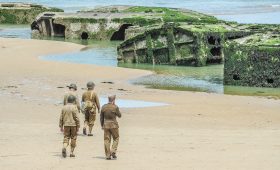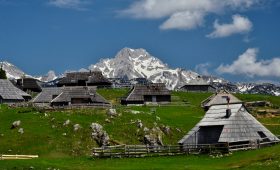Nabeul: A Journey Through Tunisia’s Coastal Heritage
Exploring Nabeul
Nabeul, located on Tunisia’s northeastern coast, is a town steeped in history and culture. Founded in the fifth century BC by the Greeks of Cyrene, it was originally known as Neapolis, meaning “New City.” Today, Nabeul is renowned for its vibrant ceramics, textiles, and the warm hospitality of its residents. As you stroll through its streets, the colorful displays of local crafts are a testament to the town’s artistic legacy.
Local Markets and Cuisine
The bustling souks of Nabeul are a sensory delight. Here, you can engage in the lively tradition of haggling for unique items, from handmade pottery to intricate textiles. The weekly Friday market is particularly popular, drawing both locals and tourists. When it comes to food, Nabeul is famous for its seafood dishes and the spicy condiment harissa, a legacy from the Andalusians who settled here in the 16th century.
When to Visit
Nabeul enjoys a Mediterranean climate, with mild, pleasant weather in spring and autumn. These seasons are ideal for exploring the town and its surroundings. Summer can be hot, with temperatures reaching up to 30.6°C (87°F), perfect for beachgoers but potentially uncomfortable for those unaccustomed to the heat. Winters are mild, with average lows around 8.4°C (47°F).
Getting There
The closest airport to Nabeul is Tunis-Carthage International Airport, about an hour’s drive away. From the airport, you can hire a taxi or rent a car. Alternatively, buses and trains offer a more budget-friendly option for reaching Nabeul from Tunis.
Transportation in Nabeul
Nabeul is compact, making it easy to explore on foot. For those who prefer other modes of transport, taxis and bicycle rentals are readily available, providing convenient ways to explore the town and its scenic surroundings.
Places to Visit
1. Nabeul Beach
With its golden sands and clear waters, Nabeul Beach is a prime spot for relaxation and water sports. Whether you’re sunbathing or swimming, the beach offers a refreshing escape. Remember to bring sunscreen and a beach towel.
2. The Medina
The Medina of Nabeul offers a glimpse into the town’s rich history. Wander through its narrow streets, admire the traditional architecture, and explore shops filled with handmade crafts. The Medina is accessible through several gates, including Beb Blad, Beb el Zaouia, and Beb el Khoukha.
3. Pottery Workshops
Nabeul is a hub for pottery, a craft that dates back centuries. Visiting a local workshop allows you to see artisans at work, learn about traditional techniques, and even try your hand at creating your own piece. The town’s pottery industry is a key part of its economy and cultural identity.
Historical Context
Nabeul’s history is rich and varied. It was an important trade hub during Roman times, known for exporting grain and garum to Rome. The city was also affected by a massive tsunami in 365 AD, which left parts of it underwater. Over the centuries, Nabeul has been under Greek, Roman, Vandal, Byzantine, and Islamic rule, each leaving its mark on the town’s cultural fabric.
Considerations
While Nabeul offers a wealth of cultural and historical attractions, visitors should be prepared for the summer heat and the bustling nature of the local markets. It’s advisable to dress modestly, particularly when visiting religious sites, and to be mindful of local customs and traditions.




